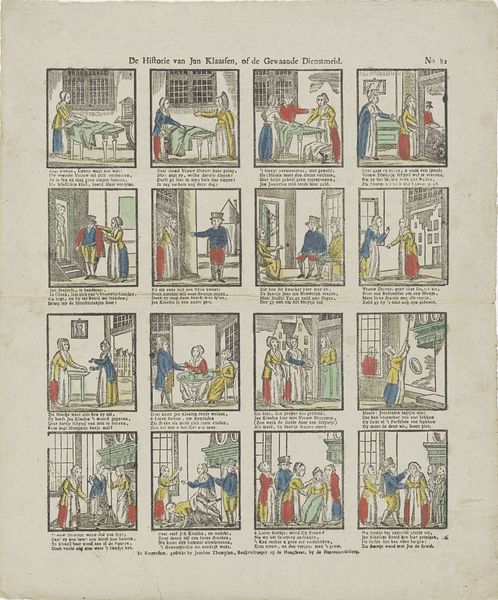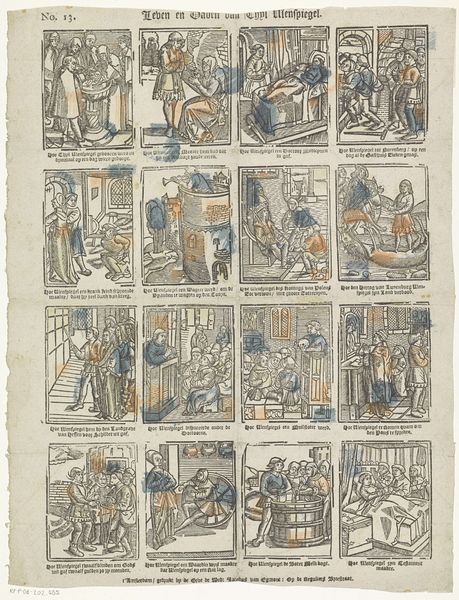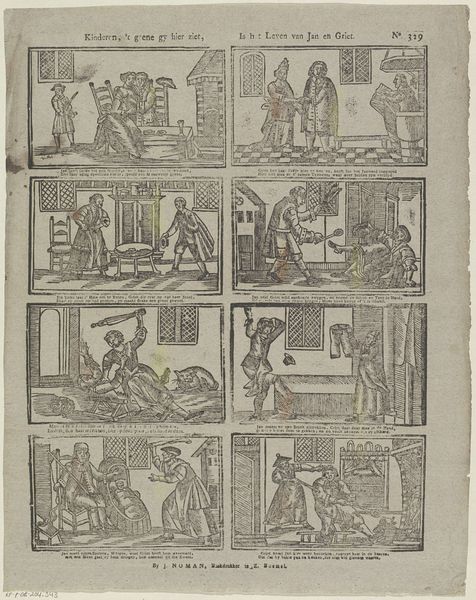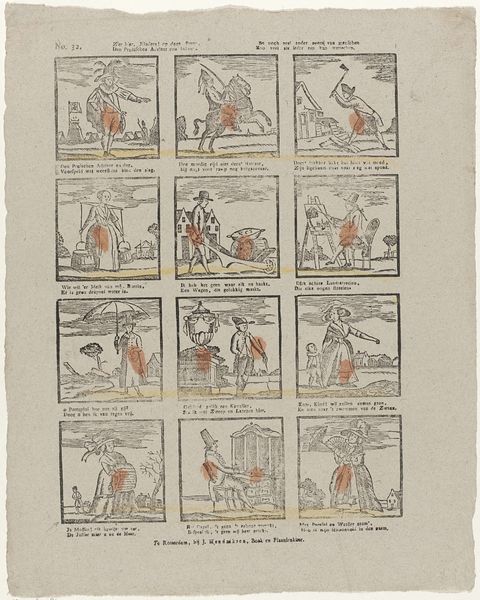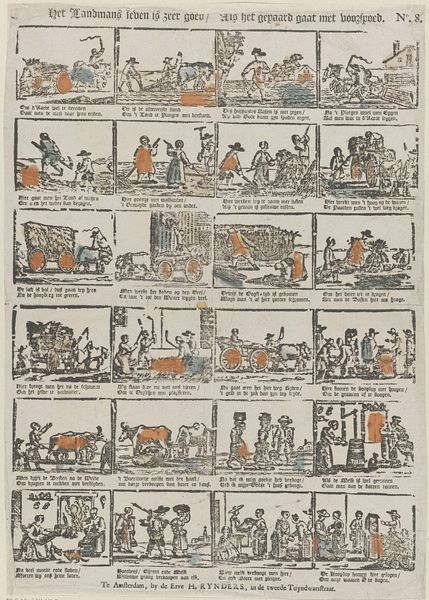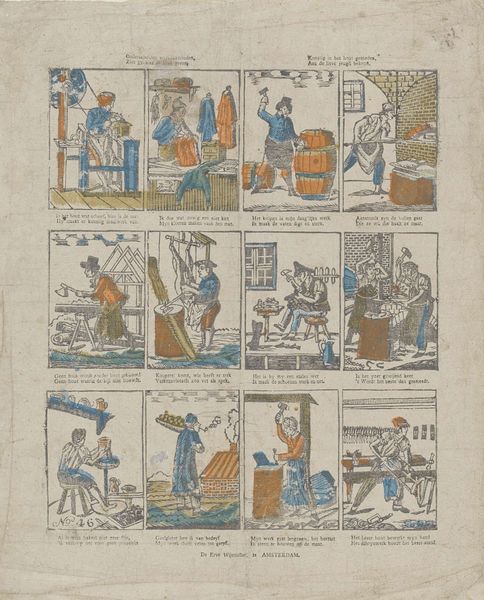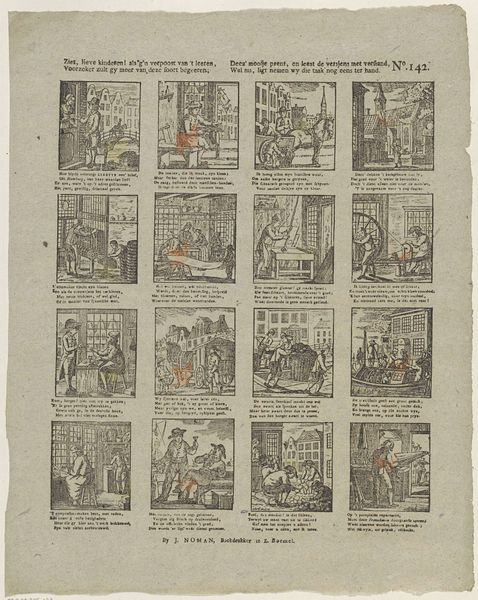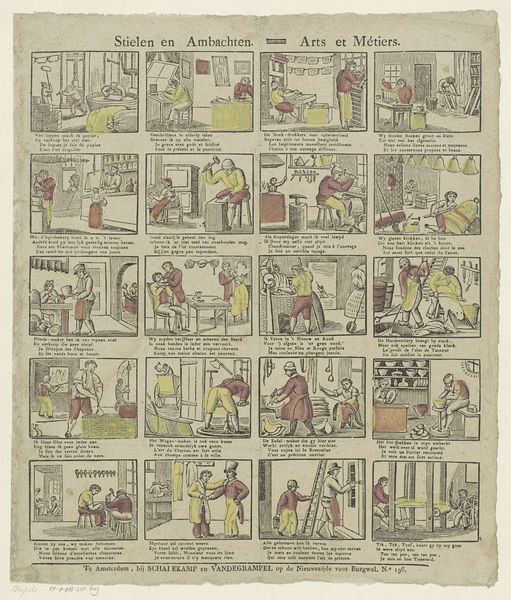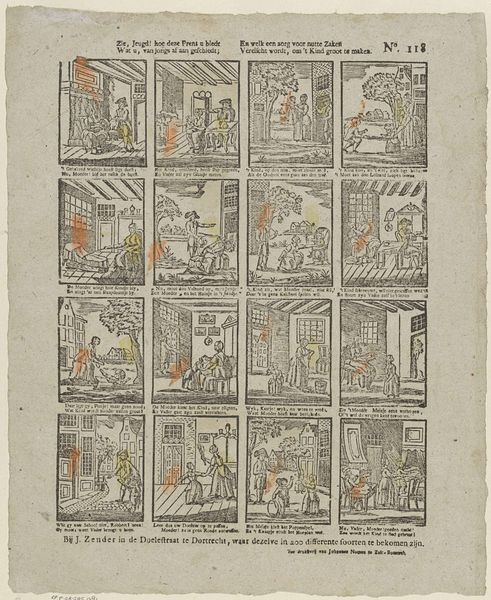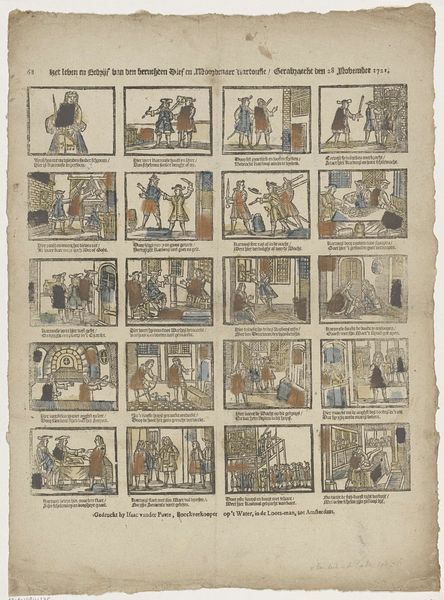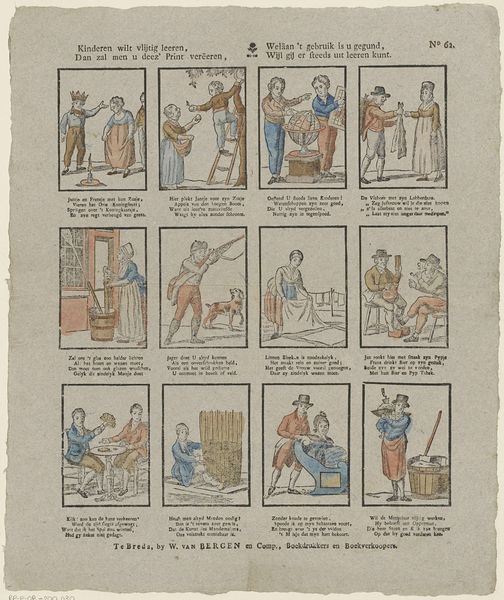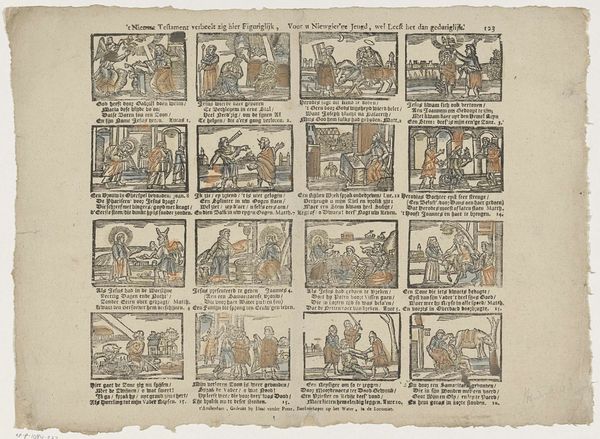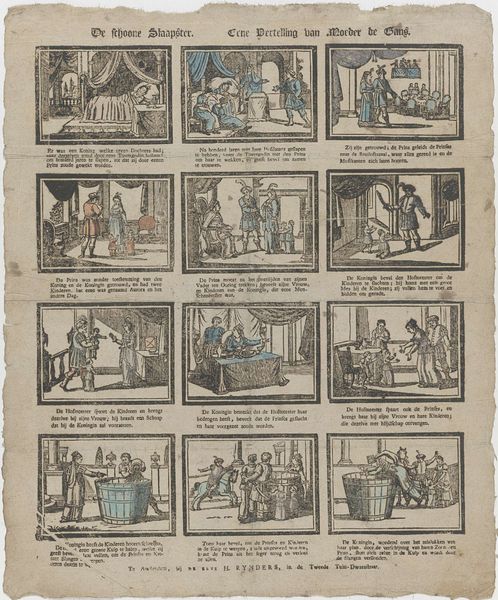
Kind're hier gy voor uw siet / 't leven van ons Klaas en Griet 1719 - 1724
0:00
0:00
print, woodcut
#
comic strip sketch
#
narrative-art
#
pen drawing
#
dutch-golden-age
# print
#
old engraving style
#
personal sketchbook
#
folk-art
#
pen-ink sketch
#
woodcut
#
comic
#
pen work
#
sketchbook drawing
#
genre-painting
#
storyboard and sketchbook work
#
sketchbook art
#
coloring book page
Dimensions: height 405 mm, width 304 mm
Copyright: Rijks Museum: Open Domain
Curator: Here we have a Dutch Golden Age print titled “Kind're hier gy voor uw siet / 't leven van ons Klaas en Griet,” dating from around 1719 to 1724, and attributed to weduwe Gijsbert de Groot. Editor: What a charmer! It’s like a proto-comic strip, all these little scenes crammed together. Immediately, I get this folk-tale vibe, like I’m peering into the lives of these slightly goofy characters, Klaas and Griet. The overall mood is playful, almost mischievous, even when some of the scenes seem a bit... intense. Curator: Indeed. It seems we are presented with something of a morality tale rendered in woodcut or perhaps a mixed-media print technique. Notice the division into eight distinct vignettes, each framed by text—most likely a rhyming couplet meant to underscore the scene’s didactic purpose. Editor: The style reminds me of illustrations in old storybooks. It's got that slightly crude but really endearing quality, doesn't it? You know, the kind where a rolling pin to the head seems almost... whimsical? Though I am curious about how literally to take these images. It seems more to represent "the idea" of the relationship, not literal recordings of actual lived interactions. Curator: Observe how the narrative unfolds not through sequential panels in the modern comic sense, but more like a series of emblems, each imparting a particular lesson. Semiotically, each image serves as a signifier, pointing to broader cultural norms and expectations around domestic life. The repeated architectural and sartorial features seem to intentionally reinforce these conventions. Editor: The colors are so simple - that muted orange really popping against the darker, inked lines. I imagine that limited color palette makes these images feel all the more accessible, even folksy. Like anyone could sit down and add a splash of paint. What's that last panel, I wonder? Looks like maybe... resolving their domestic spat with a spinning wheel? Curator: Possibly. Each panel seems to address various aspects of marriage, or domestic partnerships, reflecting, perhaps, popular understandings of marital responsibilities, conflict, and reconciliation of that era. The layout feels decidedly non-hierarchical. Editor: I love it. It's so unpretentious. No grand pronouncements, just little snippets of everyday life and the simple lives of Klaas and Griet that still resonate hundreds of years later, isn’t it remarkable? Curator: Absolutely. Its continued accessibility—the charm, if you will—lies, perhaps, in its deft reduction of universal human themes to readily graspable forms.
Comments
No comments
Be the first to comment and join the conversation on the ultimate creative platform.
